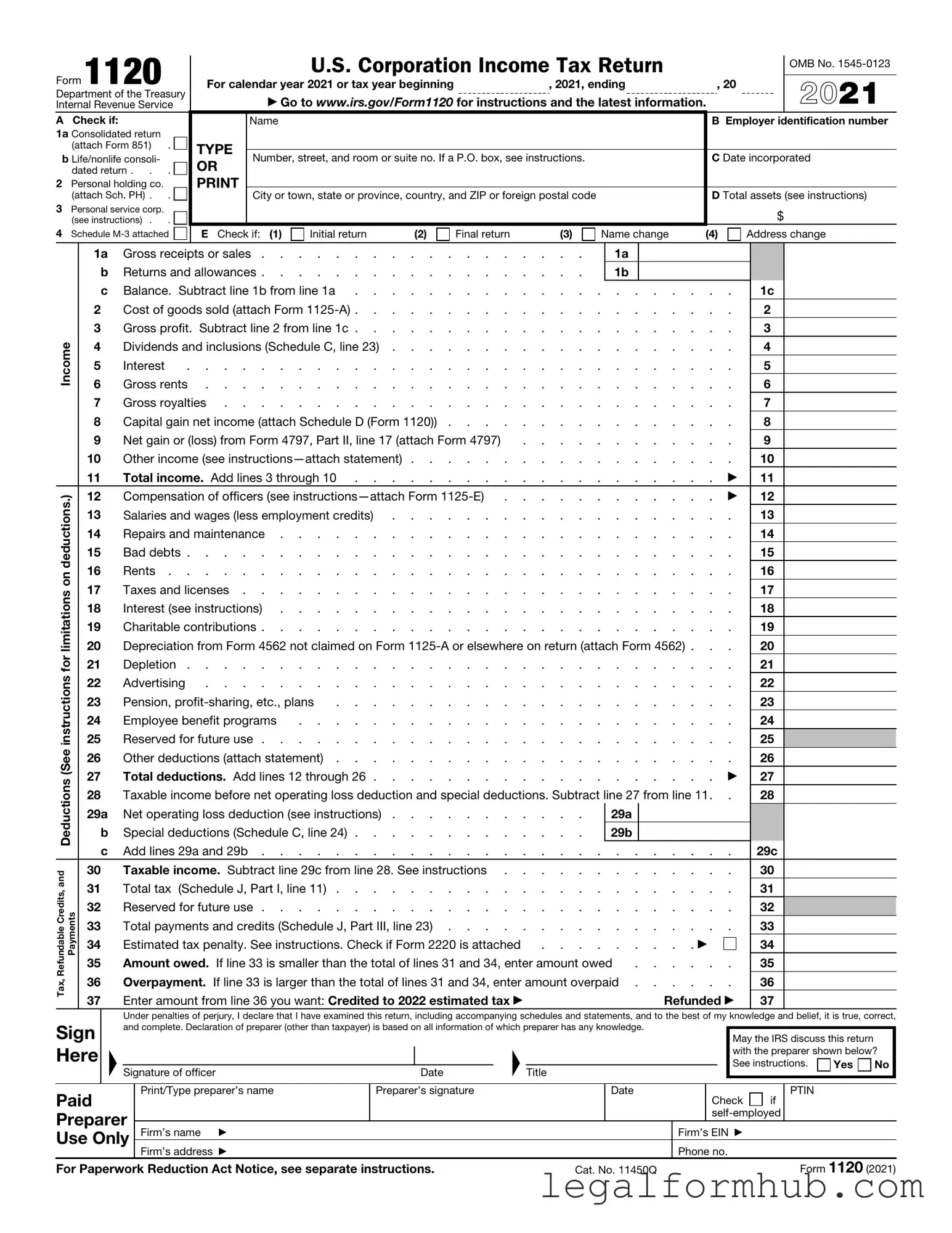The IRS Form 1065 is similar to Form 1120 in that both are used for reporting income, deductions, and other financial information to the Internal Revenue Service. However, while Form 1120 is specifically designed for corporations, Form 1065 is intended for partnerships. Partnerships do not pay income tax at the entity level; instead, they pass through profits and losses to their partners. The information on Form 1065 helps the IRS track income that will ultimately be reported on the partners' individual tax returns.
Another document that shares similarities with Form 1120 is the IRS Form 1120-S. This form is used by S corporations, which are a specific type of corporation that elects to pass corporate income, losses, deductions, and credits through to their shareholders. Like Form 1120, Form 1120-S requires reporting of financial activities, but it is tailored for S corporations, which have different tax implications. Both forms require detailed financial information, but the tax treatment differs significantly based on the entity type.
For those dealing with the intricacies of tax documentation, understanding various forms is essential. Whether you’re managing a corporation, partnership, or nonprofit organization, navigating through forms like IRS Form 1120, Form 1065, and Form 990 can be overwhelming. Resources are available to simplify these processes, and for those looking to streamline their paperwork, you can rely on Fill PDF Forms for assistance in filling out necessary documents efficiently.
The IRS Form 990 is another document that has similarities with Form 1120, particularly in the context of financial reporting. Form 990 is used by tax-exempt organizations to provide the IRS with information about their activities, governance, and financial status. While Form 1120 is focused on for-profit entities, Form 990 serves non-profit organizations. Both forms require transparency in financial reporting, but they cater to different types of organizations and have different tax obligations.
Lastly, the IRS Form 1040 is relevant when discussing individual tax returns, as it is the standard form used by individuals to report their income. While Form 1120 is for corporations, both forms ultimately serve the purpose of reporting income and calculating tax liabilities. Form 1040 includes various schedules that allow individuals to detail their income sources, deductions, and credits, similar to how corporations use Form 1120 to report their financial activities. The key difference lies in the entity type and the tax structure applicable to each form.
